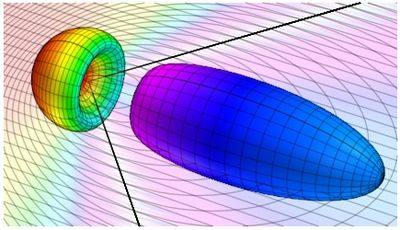 |
|
 |
|
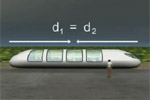 |
| 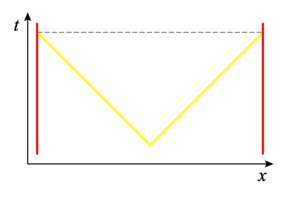 |
 |
 |
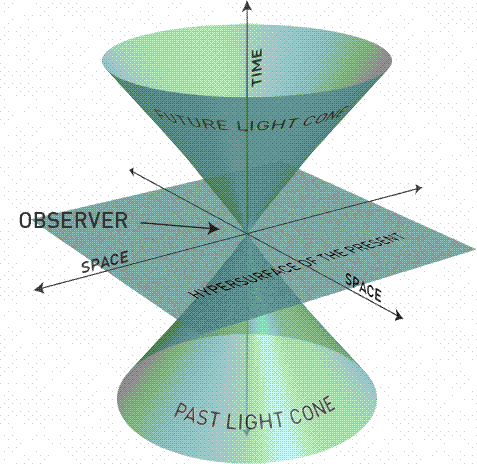 |
|
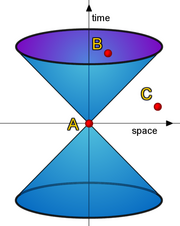 |
|
For the signal which travels from P to Q, there may be issues for an observer who moves fast enough, even if the observer moves with v < c. The black line marks the curve vt = ct' and the magenta line marks the line of simultaneity (the x'-axis). Note that the signal is sent at time ct = ct' = 0, but is received at time ct' <0 ===> it is received before it is sent.This odd result can arise if the observer moves with speed where the tachyonic signal travels with speed ac. The possibility of sending a message to the past leads to issues embodied in the what is called the The Tolman Paradox. Benford, Book, and Newcomb (1970) coined one such device an Anti-Telephone ( 1970, Phys. Rev. D, 2 # 2, 263). Such anti-telephones are theoretically possible, but can people travel backwards in time? |

|
 |
|
If tachyons exist, then signals can be carried backward in time. But note that we cannot travel back in time as our speeds are always restricted to v < c and we can never become superluminal.